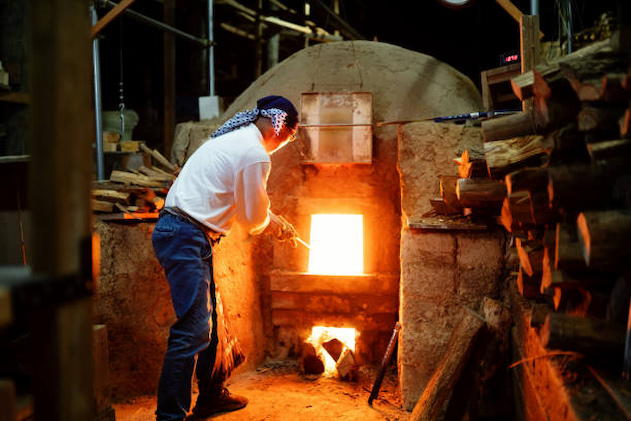A Complete Guide to Choosing the Ideal Ceramic Kiln
A kiln is an essential tool in pottery, allowing each artist to create durable and functional ceramic pieces. Although there are alternatives like air drying and oven-baking polymer clays, their results differ and may provide distinct durability levels than kiln-fired ceramic pieces.
If you’re serious about pottery and getting consistent, professional-quality results, investing in a ceramic kiln is the best choice to open a world of creative possibilities for your creative journey. Once you decide to invest in a kiln, you must assess various factors before considering the different options. After evaluating these, you can determine the different types and their specs.
What to Consider Before Buying a Kiln?
The most suitable firing device for your artistic purposes is the one that can fit in the space you’re planning for it. That’s why considering dimensions and space is critical even before shopping for a kiln. First, use a tape measure to ensure your doors are wide enough to accommodate most available options. Keep in mind that outside dimensions are typically more extensive than those of the inside chamber.
It’s not recommended that kilns, especially their controllers, get wet. They aren’t waterproof and can become a safety hazard when getting wet. That’s why another crucial thing to consider is whether you have a dry, clean, and safe place to install the device you’re buying. A garage, an enclosed porch or balcony, or a room inside a building are all suitable location choices.
Lastly, you must ensure the kiln is placed in a safe, well-ventilated area on a heat-proof surface where no animals are allowed. Carpeted areas, wooden tables, and easily accessible pet areas are a no-go. Consider large tiles or concrete floors in a safety zone to ensure safety.
What Type of Kiln is Best for Pottery?

Now that you’ve confirmed space and safety, it’s time to browse the range of reliable and efficient ceramic kilns. To pick the best pottery kiln, consider several factors: heat source, power supply, firing temperature, and size.
Heat Source: Electric or Gas?
There are two types of pottery kilns: electric and gas. The significant difference is how they generate heat; electric ones have heating elements like coils inside the chambers, while gas options use gas or propane for the firing process. Electric ceramic kilns are the most favoured option among ceramists of all skill levels because of their reliability, affordability, and ease of use.
Since the coils break down faster in high temperatures, they’re ideal for low to mid-fire applications. Electric-sourced types are excellent for novices because they load and fire effortlessly. Many have preset cycles and programmable controls to make them even more convenient. This simplicity has certain disadvantages. Because they can’t produce a decreased environment, they can’t produce as broad a spectrum of glaze colours as gas-sourced burners.
Gas-sourced varieties usually require licensing for fire safety, which could make them more challenging to operate. But earthy colours like dark browns are often produced by gas burning, giving the final product a more worn-in, rustic look. The advantage of permitting “reduction” firing is another benefit that makes professional potters and people with limited access to electricity opt for this type.
Power Supply
When purchasing an electric kiln, you should also consider its power supply. Models and their power requirements vary in size, capacity, voltage, and amperage. Before buying, confirm that your electrical supply can meet these needs. For instance, smaller electric kilns, such as a standard 230V outlet, can use fewer resources. However, most kilns require a robust 240V circuit, which runs larger appliances like water heaters and air conditioners.
Electric kiln amperages also vary; smaller units may have 20 amps, while larger units may have 50 amps or more. The latter may need a direct connection to the circuit breaker box. Check the electrical setup in the space where you plan to install it (preferably doing so with the help of a professional)—specifically whether you have access to single-phase or three-phase electricity. Then, choose a kiln that operates on the appropriate amperage.
Temperature
Firing temperature is another critical factor you should check for when buying a kiln. We should first note that those who work with clay utilise a unit of measurement for heat called “cones.” For more than a century, ceramic artists have used ceramic pyrometric cones in the shape of pyramids to gauge kiln temperature.
Although we now monitor the heat work in our kilns using digital controllers, we still refer to the different temperatures at which our glazes and clays mature using the same cone ranges. Cone 04-06 kilns are suitable for low-fire clay and glazes. As the name suggests, they are fired at lower temperatures, ranging from 900°C to 1,150°C. The finished pieces typically showcase a vibrant and colourful glaze palette.
Cone 5-6 kilns are used for mid-range pottery, firing at intermediate temperatures between 1,150°C and 1,260°C. Many potters prefer this range because of its versatility and consistent results. Finally, cone 9-10 kilns fire at high temperatures, producing solid pottery from 1,260°C to 1,480°C. The clay matures at these temperatures, resulting in dense stoneware and porcelain, often used as dishware.
Size
Let’s talk about size—because, yes, it does matter! Many people will suggest buying the largest kiln you can afford, and there’s a lot of wisdom in that advice. However, you don’t want a kiln so big that it takes weeks to fill it. That can get frustrating if you’re the type who loves to see quick results. Of course, as you grow in skill as an artist, you might quickly outgrow a smaller kiln and need something more significant.



